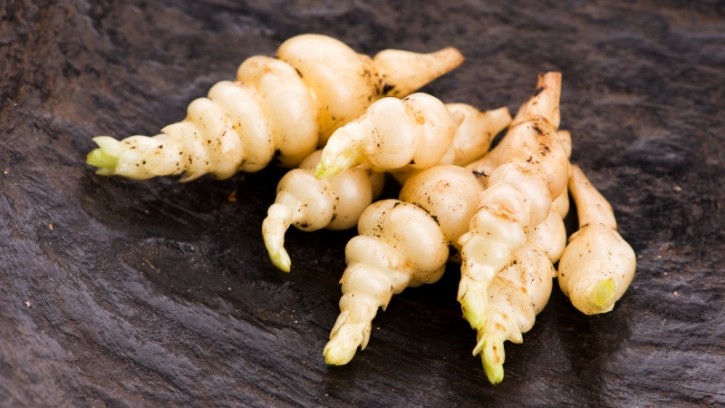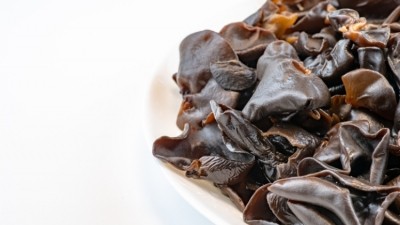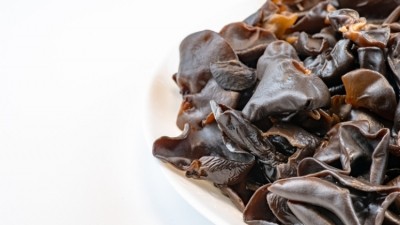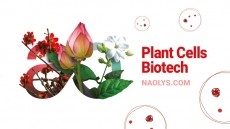Chinese artichoke fermented with lion’s mane mushroom mycelia can inhibit melanin synthesis and tyrosinase activity – Korea study

Stachys sieboldii (S. sieboldii), commonly known as Chinese artichoke, is a food and herbal medicine widely used in China, South Korea, and Japan.
The plant is used in Korea as a food additive to improve the taste and nutritional value of porridge, noodles, rice cakes, and bread, as it is said to contain several bioactive compounds, including flavonoids, terpenes, and phenolic compounds.
As it is believed to have astringent properties and potential for cosmetic applications, a group of South Korean researchers fermented S. sieboldii extracts with various mushroom mycelia to assess the effect on skin lightening and to develop new functional materials.
The study was funded by Jangheung Research Institute for Mushroom Industry.
The fruiting bodies of edible mushrooms and their mycelia have garnered interest as functional foods due to their low toxicity, as well as antitumour, antimutagenicity, antiviral, and antioxidant activities.
Specifically, mushroom mycelia have been investigated for their potential applications in foods and cosmetics, and are used to create fermented products.
In this study, it was found that S. sieboldii fermented with Hericium erinaceus (lion’s mane mushroom) mycelia had the strongest inhibitory effect on melanin synthesis and tyrosinase activity.
Based on these results, a large-scale fermentation and fractionation process was performed to isolate a single compound identified as acteoside.
Acteoside is abundant in many dicotyledonous plants, including the olive, verbena, mint, and Bignonia families.
It is an important secondary metabolite in medicinal plants and a bioactive ingredient that reportedly possesses numerous beneficial properties, such as wound healing, antioxidant, anti-inflammatory, and antineoplastic.
Findings indicated that acteoside suppressed intracellular tyrosinase activity in a dose-dependent manner, with 16.5% inhibition at highest concentration of 100μM.
However, results from the cell-free assay system suggested that acteoside does not have a direct effect on tyrosinase enzyme, but inhibits melanogenesis through other pathways, such as microphthalmia-associated transcription factor (MITF) regulation.
“The fermentation of S. sieboldii with mushroom mycelia could be a promising approach in cosmetics formulations or production of enriched extracts. Moreover, acteoside exhibited no cytotoxic activity and is thus a potentially useful natural depigmentation agent. Further studies should be directed to elucidate the pathway(s) regulated by acteoside in melanocytes,” the authors wrote.
Increasing use of fermentation
Fermentation is an ancient technique used for food processing and preservation.
With the development of alternative preservation technologies, foods have been fermented to bring significant changes in the nutritional value and sensory characteristics of foods, such as flavour, aroma and texture.
“While fermentation is widely employed in the food industry as a means to produce biologically active compounds with significant functional properties, but more recently, it is increasingly used in cosmetics to improve product quality and facilitate the absorption of active substances by the human body.”
Findings from this study showed that fermentation of an S. sieboldii hot water extract with mushroom mycelia led to a stronger whitening effect than the unfermented extract.
“It seems that the fermentation process resulted in an increase in useful components, and it has been demonstrated that the extraction yields also increased.
“In addition, the safety of functional materials plays a critical role in determining their suitability for applications in food and cosmetics. Therefore, it is crucial to establish safe concentrations of anti-melanogenesis agents for future in vitro and in vivo studies,” the authors concluded.
Source: Fermentation
https://doi.org/10.3390/fermentation9080697
“Whitening Activity of Acteoside from Stachys sieboldii Fermented with Hericium erinaceus Mycelia on Melanocytes”
Authors: Seung-Bin Im, et al


![ATTIA is doing its best to challenge the proposed classification of tea tree oil as a reproductive toxin. [Getty Images]](/var/wrbm_gb_food_pharma/storage/images/_aliases/wrbm_medium/publications/cosmetics/cosmeticsdesign-asia.com/headlines/regulation-safety/tea-tree-oil-regulation-challenge-against-reprotoxin-classification-is-under-control-attia-president/16769894-1-eng-GB/Tea-tree-oil-regulation-Challenge-against-reprotoxin-classification-is-under-control-ATTIA-President.jpg)
![Dot & Key has grown five times over the past couple of years after repositioning it to attract mass market audiences. [Dot & Key]](/var/wrbm_gb_food_pharma/storage/images/_aliases/wrbm_medium/publications/cosmetics/cosmeticsdesign-asia.com/headlines/business-financial/dot-key-grows-five-fold-since-2021-on-the-back-of-repricing-efforts/16714823-1-eng-GB/Dot-Key-grows-five-fold-since-2021-on-the-back-of-repricing-efforts.jpg)






![[Getty Images]](/var/wrbm_gb_food_pharma/storage/images/_aliases/wrbm_tiny/publications/cosmetics/cosmeticsdesign-asia.com/china/china-focus-latest-developments-in-china-s-booming-beauty-market22/17370102-1-eng-GB/China-focus-Latest-developments-in-China-s-booming-beauty-market.jpg)
![YSL's LoveShine launch has sparked a demand surge in Japan. [YSL]](/var/wrbm_gb_food_pharma/storage/images/_aliases/wrbm_tiny/publications/cosmetics/cosmeticsdesign-asia.com/article/2024/04/24/ysl-loveshine-launch-propels-lip-gloss-sales-to-record-highs-in-japan-since-2020/17372064-1-eng-GB/YSL-LoveShine-launch-propels-lip-gloss-sales-to-record-highs-in-Japan-since-2020.jpg)
![There is significant scope for innovation and new launches in the hair repair sector, especially in soaring markets such as China. [Getty Images]](/var/wrbm_gb_food_pharma/storage/images/_aliases/wrbm_tiny/publications/cosmetics/cosmeticsdesign-asia.com/article/2024/04/24/croda-zeroes-in-on-hair-repair-solutions-as-damage-hair-concerns-surge-in-markets-like-china/17362731-1-eng-GB/Croda-zeroes-in-on-hair-repair-solutions-as-damage-hair-concerns-surge-in-markets-like-China.jpg)



![Lubrizol has extended its partnership with C-beauty major PROYA. [PROYA]](/var/wrbm_gb_food_pharma/storage/images/_aliases/wrbm_tiny/publications/cosmetics/cosmeticsdesign-asia.com/headlines/brand-innovation/lubrizol-bullish-on-potential-of-c-beauty-growth-potential/17362515-1-eng-GB/Lubrizol-bullish-on-potential-of-C-beauty-growth-potential.jpg)


